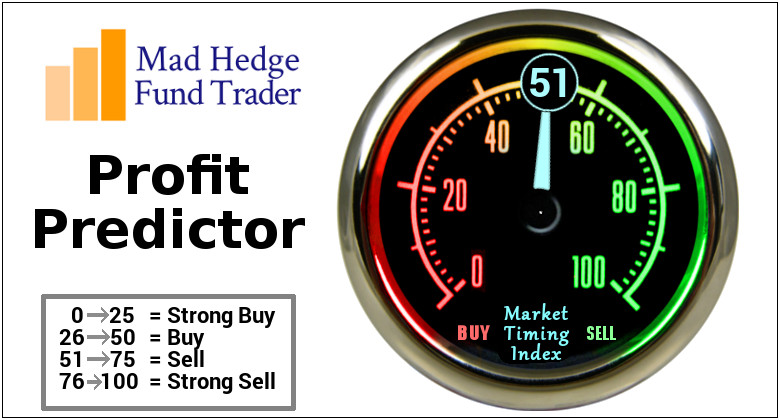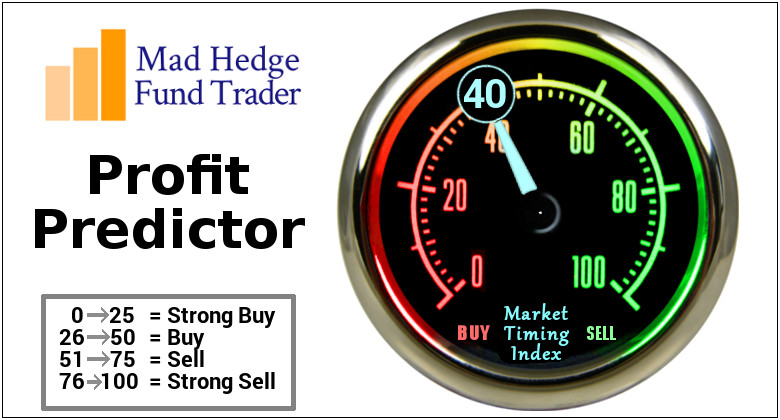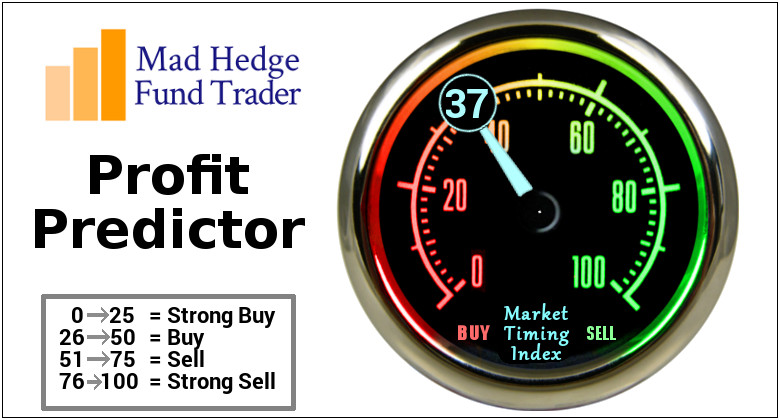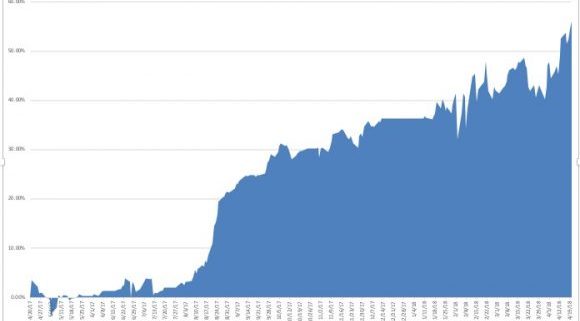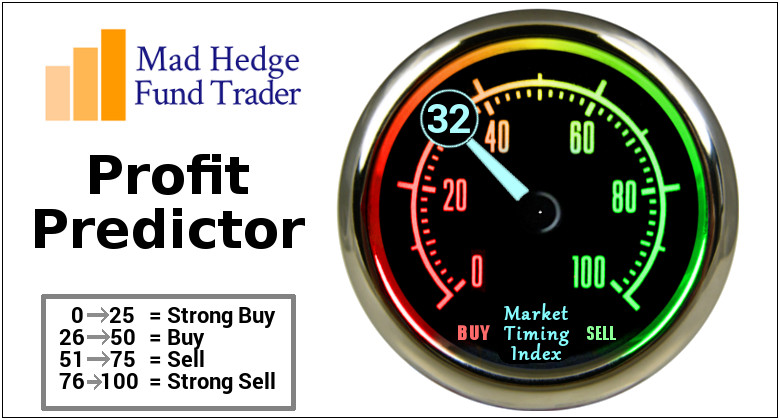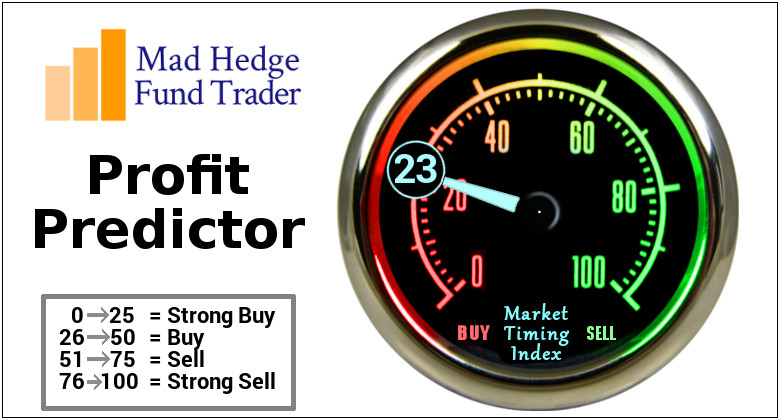Global Market Comments
June 12, 2018
Fiat Lux
Featured Trade:
(THE LAST CHANCE TO ATTEND THE THURSDAY, JUNE 14, 2018, NEW YORK, NY, GLOBAL STRATEGY LUNCHEON)
(SHORT SELLING SCHOOL 101),
(SH), (SDS), (PSQ), (DOG), (RWM), (SPXU), (AAPL),
(VIX), (VXX), (IPO), (MTUM), (SPHB), (HDGE),
Tag Archive for: (VXX)
Global Market Comments
May 16, 2018
Fiat Lux
Featured Trade:
(THE LAWSUITS ARE PILING UP ON THE XIV),
(XIV), (VXX),
(KISS THAT UNION JOB GOODBYE),
(TESTIMONIAL)
One of the most painful experiences of my half century long trading life involved the Credit Suisse VelocityShares Daily Inverse VIX Short-Term ETNs (XIV).
I was certain that the Volatility Index (VIX) would peak for the year at the Wednesday, February 5, 8:30 AM market opening. So, I shot out a Trade Alert to place only 10% of your capital into the (XIV), a bet that the (VIX) would fall. There was only a 15-minute window before the market closed during which readers could get in. A few managed to do it.
The (XIV) had just fallen from $147 to $95.00. We got in at $97.08, and it closed the day at $100. The (VIX) closed at $37. And we had made money many times selling short volatility over the past decade on spikes just like this one. The (XIV) had been the fastest growing of 3,500 ETFs over the past five years. So far, so good.
Then an hour after the close, I received an urgent call from a client. The (XIV) was trading at $14. What's up?
My initial instinct was that a major hedge fund had either gone bankrupt or had a margin call and was suffering a forced liquidation in the aftermarket.
Overnight, the (XIV) traded as low as $6.50. I later heard that Credit Suisse itself was the major buyer of volatility in the aftermarket, in fact was the ONLY buyer, and that it was deliberately attempting to bankrupt its own fund to limit its liability. Those in management in Zurich were afraid that if the (VIX) shot up to $100 it might take the entire bank down. In short, they panicked.
The next morning they issued notice that they were closing the fund in 10 days. I was certain that the managers were guilty of insider trading and securities fraud in ordering the emergency short cover, and that it was just a matter of time before the class action suits emerged.
Three months later, the lawsuit has been filed by the Gibbs Law Group in Oakland, CA, in the Southern District of New York for unspecified damages, expenses, and legal fees, with a jury trial demanded.
The last time I was involved with one of these was with the MF Global bankruptcy in 2011, where I and most of the rest of the trading community had an account.
I was initially offered 25 cents on the dollar. I refused, expecting to eventually get paid in full. I knew that the MF assets in question were never lost, they were just caught up in a conflict between U.S. and U.S. bankruptcy law that would eventually be resolved. That is what happened, and I was paid in full three years later.
The (XIV) case is much more complicated because there was a huge real loss, about $2 billion, and it involved complex mathematically constructed derivatives. Since the managers behaved so reprehensibly, and because the evidence of their misdeeds is so overwhelming, it is unlikely that the case will ever come to trial. Instead, there will be an out-of-court settlement.
If the SEC takes action it will further strengthen the plaintiffs' hands. There is currently an investigation of Credit Suisse underway and it ultimately could get banned from doing business in the United States.
My bet is that investors will get at least half their money back, if not more. But it could take years to get it, and in a class action the lawyers get a big chunk of any awards for their efforts, usually one-third. Sometimes, class actions can last as long as 10 years.
As for my own followers, most followed my advice to put no more than 10% of their capital into the trade. As it turned out, they made back the 9% loss in less than a month, half of it through selling volatility short again. But this time I used put spreads on the iPath S&P 500 VIX Short-Term Futures ETN (VXX), a long volatility play that will never go to zero overnight.
To read the suit in its entirety, please click here.
To learn more about the suit, please click here and here.
Or you can call the Gibbs Law Group directly at 510-350-9700. I'm sure they'd love to hear from you.
Trading Volatility Can Be Hazardous to Your Wealth
Global Market Comments
April 24, 2018
Fiat Lux
Featured Trade:
(DON'T MISS THE APRIL 25 GLOBAL STRATEGY WEBINAR),
(MONDAY, JUNE 11, FORT WORTH, TEXAS, GLOBAL STRATEGY LUNCHEON)
(WHY INDEXERS ARE TOAST),
(VIX), (VXX), (SPY), (AAPL), (HACK),
Hardly a day goes by without some market expert predicting that it's only a matter of time before machines completely take over the stock market.
Humans are about to be tossed into the dustbin of history.
Recently, money management giant BlackRock, with a staggering $5.4 trillion in assets under management, announced that algorithms would take over a much larger share of the investment decision-making process.
Exchange Traded Funds (ETFs) are adding fuel to the fire.
By moving capital out of single stocks and into baskets, you are also sucking the volatility, and the vitality out of the market.
This is true whether money is moving into the $237 billion S&P 500 (SPY), or the miniscule $1 billion PureFunds ISE Cyber Security ETF (HACK), which holds only 30 individual names.
The problem is being greatly exacerbated by the recent explosive growth of the ETF industry.
In the past five years, the total amount of capital committed to ETFs has doubled to more than $3 trillion, while the number of ETFs has soared to well over 2,000.
In fact, there is now more money committed to ETFs than publicly listed single stocks!
While many individual investors say they are moving into ETFs to save on commissions and expenses, in fact, the opposite is true.
You just don't see them.
They are buried away in wide-dealing spreads and operating expenses buried deeply in prospectuses.
The net effect of the ETF industry is to greatly enhance Wall Street's take from their brokerage business, i.e., from YOU.
Every wonder why the shares of the big banks are REALLY trading at new multi-year highs?
I hate to say this, but I've seen this movie before.
Whenever a strategy becomes popular, it carries with it the seeds of its own destruction.
The most famous scare was the "Portfolio Insurance" of the 1980s, a proprietary formula sold to institutional investors that allegedly protected them by automatically selling in down markets.
Of course, once everyone was in the boat, the end result was the 1987 crash, which saw the Dow Average plunge 20% in one day.
The net effect was to maximize everyone's short positions at absolute market bottoms.
A lot of former portfolio managers started driving Yellow Cabs after that one!
I'll give you another example.
Until 2007, every computer model in the financial industry said that real estate prices only went up.
Trillions of dollars of derivative securities were sold based on this assumption.
However, all of these models relied on only 50 years' worth of data dating back to the immediate postwar era.
Hello subprime crisis!
If their data had gone back 70 years, it would have included the Great Depression.
The superior models would have added one extra proviso - that real estate can collapse by 90% at any time, without warning, and then stay down for a decade.
The derivate securities based on THIS more accurate assumption would have been priced much, much more expensively.
And here is the basic problem.
As soon as money enters a strategy, it changes the behavior of that strategy.
The more money that enters, the more that strategy changes, to the point where it produces the opposite of the promised outcome.
Strategies that attract only $10 million market-wide can make 50% a year returns or better.
But try and execute with $1 billion, and the identical strategies lose money. Guess what happens at $1 trillion?
This is why high frequency traders can't grow beyond their current small size on a capitalized basis, even though they account for 70% of all trading.
I speak from experience.
During the 1980s I used a strategy called "Japanese Equity Warrant Arbitrage," which generated a risk-free return of 30% a year or more.
This was back when overnight Japanese yen interest rates were at 6%, and you could buy Japanese equity warrants at parity with 5:1 leverage (5 X 6 = 30).
When there were only a tiny handful of us trading these arcane securities, we all made fortunes. Every other East End London kid was driving a new Ferrari (yes, David, that's you!).
At its peak in 1989, the strategy probably employed 10,000 people to execute and clear in London, Tokyo, and New York.
However, once the Japanese stock market crash began in earnest, liquidity in the necessary instruments vaporized, and the strategy became a huge loser.
The entire business shut down within two years. Enter several thousand new Yellow Cab drivers.
All of this means that the current indexing fad is setting up for a giant fall.
Except that this time, many managers are going to have to become Uber drivers instead.
Computers are great at purely quantitative analysis based on historical data.
Throw emotion in there anywhere, and the quants are toast.
And, at the end of the day, markets are made up of high emotional human beings who want to get rich, brag to their friends, and argue with their spouses.
In fact, the demise has already started.
Look no further than investment performance so far in 2018.
The (SPY) is up a scant 0% this year.
Amazon (AAPL), on the other hand, one of the most widely owned stocks in the world, is up an eye-popping 30%.
If you DON'T own Amazon, you basically don't HAVE any performance to report for 2017.
I'll tell you my conclusion to all of this.
Use a combination of algorithms AND personal judgment, and you will come out a winner, as I do. It also helps to have 50 years of trading experience.
You have to know when to tell your algorithm a firm "NO."
While your algo may be telling you to "BUY" ahead of a monthly Nonfarm Payroll Report or a presidential election, you may not sleep at night if you do so.
This is how I have been able to triple my own trading performance since 2015, taking my 2017 year-to-date to an enviable 20%.
It's not as good as being 30% invested in Amazon.
But it beats the pants off of any passive index all day long.
Yup, This is a Passive Investor
Global Market Comments
April 23, 2018
Fiat Lux
Featured Trade:
(THE MARKET OUTLOOK FOR THE WEEK AHEAD, or HERE COMES THE FOUR HORSEMEN OF THE APOCALYPSE),
(SPY), (GOOGL), (TLT), (GLD), (AAPL), (VIX), (VXX), (C), (JPM),
(HOW TO AVOID PONZI SCHEMES),
(TESTIMONIAL)
Have you liked 2018 so far?
Good.
Because if you are an index player, you get to do it all over again. For the major stock indexes are now unchanged on the year. In effect, it is January 1 once more.
Unless of course you are a follower of the Mad Hedge Fund Trader. In that case, you are up an eye-popping 19.75% so far in 2018. But more on that later.
Last week we caught the first glimpse in this cycle of the investment Four Housemen of the Apocalypse. Interest rates are rising, the yield on the 10-year Treasury bond (TLT) reaching a four-year high at 2.96%. When we hit 3.00%, expect all hell to break loose.
The economic data is rolling over bit by bit, although it is more like a death by a thousand cuts than a major swoon. The heavy hand of major tariff increases for steel and aluminum is making itself felt. Chinese investment in the US is falling like a rock.
The duty on newsprint imports from Canada is about to put what's left of the newspaper business out of business. Gee, how did this industry get targeted above all others?
The dollar is weak (UUP), thanks to endless talk about trade wars.
Anecdotal evidence of inflation is everywhere. By this I mean that the price is rising for everything you have to buy, like your home, health care, college education, and website upgrades, while everything you want to sell, such as your own labor, is seeing the price fall.
We're not in a recession yet. Call this a pre-recession, which is a long-leading indicator of a stock market top. The real thing shouldn't show until late 2019 or 2020.
There was a kerfuffle over the outlook for Apple (AAPL) last week, which temporarily demolished the entire technology sector. iPhone sales estimates have been cut, and the parts pipeline has been drying up.
If you're a short-term trader, you should have sold your position in April 13 when I did. If you are a long-term investor, ignore it. You always get this kind of price action in between product cycles. I still see $200 a share in 2018. This too will pass.
This month, I have been busier than a one-armed paper hanger, sending out Trade Alerts across all asset classes almost every day.
Last week, I bought the Volatility Index (VXX) at the low, took profits in longs in gold (GLD), JP Morgan (JPM), Alphabet (GOOGL), and shorts in the US Treasury bond market (TLT), the S&P 500 (SPY), and the Volatility Index (VXX).
It is amazing how well that "buy low, sell high" thing works when you actually execute it. As a result, profits have been raining on the heads of Mad Hedge Trade Alert followers.
That brings April up to an amazing +12.99% profit, my 2018 year-to-date to +19.75%, my trailing one-year return to +56.09%, and my eight-year performance to a new all-time high of 296.22%. This brings my annualized return up to 35.55% since inception.
The last 14 consecutive Trade Alerts have been profitable. As for next week, I am going in with a net short position, with my stock longs in Alphabet (GOOGL) and Citigroup (C) fully hedged up.
And the best is yet to come!
I couldn't help but laugh when I heard that Republican House Speaker Paul Ryan announced his retirement in order to spend more time with his family. He must have the world's most unusual teenagers.
When I take my own teens out to lunch to visit with their friends, I have to sit on the opposite side of the restaurant, hide behind a newspaper, wear an oversized hat, and pretend I don't know them, even though the bill always mysteriously shows up on my table.
This will be FANG week on the earnings front, the most important of the quarter.
On Monday, April 23, at 10:00 AM, we get March Existing-Home Sales. Expect the Sohn Investment Conference in New York to suck up a lot of airtime. Alphabet (GOOGL) reports.
On Tuesday, April 24, at 8:30 AM EST, we receive the February S&P CoreLogic Case-Shiller Home Price Index, which may see prices accelerate from the last 6.3% annual rate. Caterpillar (CAT) and Coca Cola (KO) report.
On Wednesday, April 25, at 2:00 PM, the weekly EIA Petroleum Statistics are out. Facebook (FB), Advanced Micro Devices (AMD), and Boeing (BA) report.
Thursday, April 26, leads with the Weekly Jobless Claims at 8:30 AM EST, which saw a fall of 9,000 last week. At the same time, we get March Durable Goods Orders. American Airlines (AAL), Raytheon (RTN), and KB Homes (KBH) report.
On Friday, April 27, at 8:30 AM EST, we get an early read on US Q1 GDP.
We get the Baker Hughes Rig Count at 1:00 PM EST. Last week brought an increase of 8. Chevron (CVX) reports.
As for me, I am going to take advantage of good weather in San Francisco and bike my way across the San Francisco-Oakland Bay Bridge to Treasure Island.
Good Luck and Good Trading.
Global Market Comments
April 19, 2018
Fiat Lux
Featured Trade:
(DIVING BACK INTO THE VIX),
(VIX), (VXX), (SPX),
(THE GREAT AMERICAN JOBS MISMATCH)
I think we are only days, at the most weeks, away from the next crisis coming out of Washington. It can come for any of a dozen different reasons.
Wars with Syria, Iran or North Korea. The next escalation of the trade war with China. The failure of the NAFTA renegotiation. Another sex scandal. The latest chapter of the Mueller investigation.
And then there's the totally unexpected, out of the blue black swan.
We are spoiled for choice.
For stock investors, it's like hiking on the top of Mount Whitney during a thunderstorm with a steel ice axe in hand.
So, I am going to buy some fire insurance here while it is on sale to protect my other long positions in technology and financial stocks.
Since April 1, the Volatility Index (VIX) has performed a swan dive from $26 to $15, a decline of 42.30%.
I have always been one to buy umbrellas during parched summers, and sun tan lotion during the frozen depths of winter. This is an opportunity to do exactly that.
Until the next disaster comes, I expect the (VXX) to trade sideways from here, and not plumb new lows. These days, a premium is paid for downside protection.
The year is playing out as I expected in my 2018 Annual Asset Class Review (Click here for the link.). Expect double the volatility with half the returns.
So far, so good.
If you don't do options buy the (VXX) outright for a quick trading pop.
You may know of the Volatility Index from the many clueless talking heads, beginners, and newbies who call (VIX) the "Fear Index."
For those of you who have a PhD in higher mathematics from MIT, the (VIX) is simply a weighted blend of prices for a range of options on the S&P 500 index.
The formula uses a kernel-smoothed estimator that takes as inputs the current market prices for all out-of-the-money calls and puts for the front month and second month expirations.
The (VIX) is the square root of the par variance swap rate for a 30-day term initiated today. To get into the pricing of the individual options, please go look up your handy-dandy and ever-useful Black-Scholes equation.
You will recall that this is the equation that derives from the Brownian motion of heat transference in metals. Got all that?
For the rest of you who do not possess a PhD in higher mathematics from MIT, and maybe scored a 450 on your math SAT test, or who don't know what an SAT test is, this is what you need to know.
When the market goes up, the (VIX) goes down. When the market goes down, the (VIX) goes up. Period.
End of story. Class dismissed.
The (VIX) is expressed in terms of the annualized movement in the S&P 500, which today is at $806.06.
So, for example, a (VIX) of $15.48 means that the market expects the index to move 4.47%, or 121.37 S&P 500 points, over the next 30 days.
You get this by calculating $15.48/3.46 = 4.47%, where the square root of 12 months is 3.46 months.
The volatility index doesn't really care which way the stock index moves. If the S&P 500 moves more than the projected 4.47%, you make a profit on your long (VIX) positions. As we know, the markets these tumultuous days can move 4.47% in a single day.
I am going into this detail because I always get a million questions whenever I raise this subject with volatility-deprived investors.
It gets better. Futures contracts began trading on the (VIX) in 2004, and options on the futures since 2006.
Since then, these instruments have provided a vital means through which hedge funds control risk in their portfolios, thus providing the "hedge" in hedge fund.
If you make money on your (VIX) trade, it will offset losses on other long positions. This is how the big funds most commonly use it.
If you lose money on your long (VIX) position, it is only because all your other long positions went up.
But then no one who buys fire insurance ever complains when their house doesn't burn down.
"Chance Favors the Prepared," said French scientist Louis Pasteur.
Global Market Comments
April 16, 2018
Fiat Lux
Featured Trade:
(THE MARKET OUTLOOK FOR THE WEEK AHEAD, or THE WEEK THAT NOTHING HAPPENED),
(TLT), (GLD), (SPY), (QQQ), (USO), (UUP),
(VXX), (GOOGL), (JPM), (AAPL),
(HOW TO HANDLE THE FRIDAY, APRIL 20 OPTIONS EXPIRATION), (TLT), (VXX), (GOOGL), (JPM)
Legal Disclaimer
There is a very high degree of risk involved in trading. Past results are not indicative of future returns. MadHedgeFundTrader.com and all individuals affiliated with this site assume no responsibilities for your trading and investment results. The indicators, strategies, columns, articles and all other features are for educational purposes only and should not be construed as investment advice. Information for futures trading observations are obtained from sources believed to be reliable, but we do not warrant its completeness or accuracy, or warrant any results from the use of the information. Your use of the trading observations is entirely at your own risk and it is your sole responsibility to evaluate the accuracy, completeness and usefulness of the information. You must assess the risk of any trade with your broker and make your own independent decisions regarding any securities mentioned herein. Affiliates of MadHedgeFundTrader.com may have a position or effect transactions in the securities described herein (or options thereon) and/or otherwise employ trading strategies that may be consistent or inconsistent with the provided strategies.


